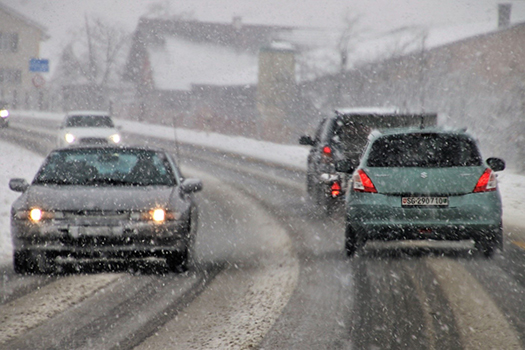
While the temperatures drop, the chances of having car trouble rises. From breakdowns because of the cold to accidents because of slippery roads, these situations become more common during this season.
If you don’t want to find yourself in the middle of such a mishap, make your car winter-worthy with these simple tips.
Get a Tune Up
When dealing with harsh weather conditions, make sure your car is up to the challenge. If there are any existing mechanical issues, exposure to the cold will just make them worse. Getting a tune up will help make sure that won’t happen.
Aside from replacing any worn out parts, your vehicle’s oil and fluids also need to be looked at. If they need to be changed, be sure to use fluids that can handle the low temperatures. After all, they can’t do their job if they’re frozen solid.
Check the Battery
Another part of your car that gets hit hard by the cold is the battery. The winter weather reduces its capacity to hold a charge. But at the same time, your car needs more power to start when it’s cold. There’s also the different electrical and heating systems that are necessary during this time of year.
If you don’t want to be stuck in the parking lot because your car won’t start, have your battery checked at a local auto shop. Don’t hesitate to swap it out for a new one if the mechanic recommends you do so. That’ll still be much cheaper than having to tow your car.
Watch the Tire Pressure

The cold has an effect on the air in your tires, too. For every 15-degree drop in temperature, you lose around 1-2 PSI of pressure. That may not seem like much but if a tire is not inflated to its recommended values, it’ll have less traction and wear out faster.
Make it a habit to check your tire pressures before you leave the driveway. You should make sure they’re properly inflated at least once a week. When it’s time to add some air, fill it up to the maximum rated pressure. That way, they’ll still be within the recommended range even if temperatures drop further.
Wash, Wax, and Winterize
In areas that get lots of snow, salt and sand are usually used to clear the roads. While these additives help make the streets safe to drive on, they’re not something you want sticking to your car for very long. If left alone, it can corrode the exterior of your vehicle.
Luckily, it’s easy to avoid this. Just get your car washed and waxed often during the winter months. Consider some undercoating as well to protect the undercarriage.
Pack an Emergency Kit
Every driver should be prepared for an emergency, especially during winter. Saying that it can save your life is no exaggeration.
For starters, you’ll need blankets, warm clothes, plus some food and water. It’s also a good idea to have a backup phone or at least a power bank to keep your phone charged in a pinch. A flashlight and road flares are also necessary so you can attract attention if you need help. Pack all these in a bag and keep it in the trunk at all times.
A little bit of preparation can go a long way to keep your car up and running this winter. Follow these tips and you can drive without worry.

